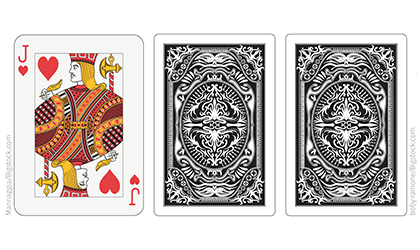
Once upon a time, Play Your Cards Right was a popular Australian and British TV game show in which contestants were dealt one card face up and several cards face down from a standard pack of 52 cards. The aim of the game was to guess whether the next card along was higher or lower than the face-up card.
Get it right and the contestant would have to guess whether the next mystery card was higher or lower than the last overturned card. Get it wrong (or be unlucky enough to turn over the same card of a different suit) and it was game over.
(US readers might be familiar with this general format as Play Your Cards Right was based on an American show called Card Sharks.)
For the August 2021 issue of Significance we’re revisiting the game. You’re a contestant and you’ve been dealt the following three cards: a Jack of Hearts and two mystery cards. Aces are high.
So, is the next card higher or lower? We can inform our guess by calculating the probability of the next card being lower. There are 36 cards lower than the Jack of Hearts and 51 cards unseen. So, the probability that the second card is lower can be calculated as 36/51 ≈ 70.6%.
Now, let’s imagine you made your choice and you were correct. Well done, you. Your task now is to guess whether the third card is higher or lower than the second card.
And here’s what I want you to work out: what is the probability that both your guesses are correct?
Once you’ve tackled that problem, try this one. Before making your first guess, you are given the opportunity to replace the Jack of Hearts with another random card from the pack. Should you make the switch?
Send your answers to significance@rss.org.uk. Explain to us how you came up with the solution, as we may publish a selection of correct entries in our October issue.
- Puzzle set by Michael Fletcher and published in the August 2021 issue of Significance.
- Try your hand at Michael’s previous puzzle, Special spinners – and see here for the solution (magazine subscription required).




